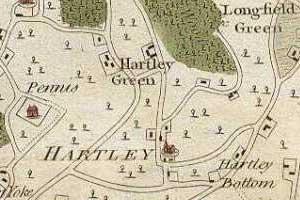Go To Section
Dunwich
Borough
Available from Boydell and Brewer
Background Information
No names known for 1510-23
Elections
| Date | Candidate |
|---|---|
| 1529 | SIR WILLIAM ROUS |
| CHRISTOPHER JENNEY | |
| 1536 | (not known) |
| 1539 | (not known) |
| 1542 | ROBERT BROWNE I |
| GEORGE COPPYN | |
| 1545 | ROBERT BROWNE I |
| ROBERT COPPYN | |
| 1547 | ROBERT COPPYN |
| JOHN HARRISON alias HALL | |
| by 24 Nov. 1548 | THOMAS HEYDON vice Harrison, deceased1 |
| 1553 (Mar.) | FRANCIS YAXLEY |
| ROBERT COPPYN | |
| 1553 (Oct.) | ROBERT COPPYN |
| NICHOLAS HASBOROUGH | |
| 1554 (Apr.) | ROBERT BROWNE I |
| GEORGE JERNINGHAM | |
| 1554 (Nov.) | SIR EDMUND ROUS 2 |
| ROBERT COPPYN 3 | |
| 1555 | GEORGE SAXMUNDHAM |
| ANDREW GREEN | |
| 1558 | THOMAS PYCTO |
| JOHN BROWNE I |
Main Article
In spite of its progressive erosion by the sea, Dunwich in the early 16th century still had some 230 taxable persons. Its status as a royal borough, dating from a charter of John, had earlier been threatened on the renewal of the fee-farm by a proviso that the burgesses should pay whatever any purchaser was prepared to give for it. This proviso was repeated at the next renewal in 1506 but was omitted in 1525 when the amount was fixed at £12 6s.8d. In 1547 the borough obtained a confirmation of the rights set out in an inspeximus of 1463. It was governed by two bailiffs, who were also appointed justices of the peace with one man learned in the law and four of the better burgesses; it elected its two coroners and enjoyed its own admiralty jurisdiction. No borough records exist for the period.4
Indentures survive for all Parliaments between 1542 and 1558, except the two summoned in 1554. They are in Latin, the contracting parties being the sheriff of Norfolk and Suffolk of the one part and the two bailiffs of ‘the King’s town or borough’ and the commonalty of Dunwich of the other: apart from the bailiffs none of the electors is named. The town paid John Browne 20s. towards his parliamentary expenses, but when Sir Edmund Rous presented a bill for £19 4s. he was answered that he had agreed to serve without wages.5
Five of the Dunwich Members were resident merchants or shipowners with municipal experience. During the middle decades of the century three generations of the Coppyn family supplied Members: George Coppyn sat once, his son Robert seven times (twice under Elizabeth), his grandson Gregory once (under Elizabeth) and a kinsman Andrew Green once. The families of Jenney and Rous, both of which had property in the town, also furnished Members as they had done in the past, and the two Brownes, father and son, who leased a manor there and lived at neighbouring Leiston, sat four times in all. George Jerningham’s return was almost certainly the work of the sheriff, his brother-in-law Sir Thomas Cornwallis, and Francis Yaxley had a family link with the neighbourhood to supplement the support he doubtless received in March 1553 from the Duke of Northumberland and Secretary Cecil. Thomas Heydon was a nephew of the local magnate Sir William Willoughby, 1st Baron Willoughby of Parham, who may also have nominated John Harrison alias Hall, the only man probably not from East Anglia to be returned for Dunwich in the period. Besides Willoughby, the Duke of Suffolk and the dukes of Norfolk all seem to have influenced the choice of Members: Thomas Pycto, whose identity remains uncertain, was perhaps a nominee of the 4th Duke of Norfolk.

